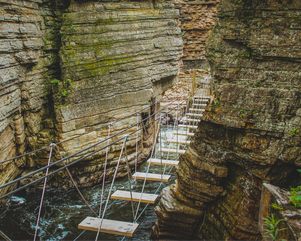Figure It In, LLC
 Photo from Canva Photo from Canva Recently I heard the phrase, "Humans do NOT lack trust, but they do trust in lack." I often hear people say that they "aren't the trusting type." Meaning, they have been burned so many times that they consider it a feature of their personality that they do not tend to trust easily or at all. Respectfully, and with great curiosity, I like to ask questions about how anti-trust they really are. What I have learned from having these conversations many times over the years is that when we say "trust' we are really talking about vulnerability and the willingness to show or evidence our sense of being incomplete. For example, if we were neighbors, and I knocked on your door for a cup of sugar, you would know more about my humanness or lack of foresight because I had decided to cook something without checking first to see if I had all the ingredients. I would also be assuming that you knew the difference between salt and sugar and would be giving me a safe and reliable product. I often explain that trust is like a bridge. We have to build relationship from both directions to create a sense of connection. Maybe I use this metaphor because I live in a city full of bridges (Portland, Oregon) connecting the east side of the city with the west side. After having some recent near-misses with commuter not respecting the rules of the bridges I was crossing recently, I have started to add to this metaphor that "trust is like a bridge" with boundaries. In the concrete world, boundary setting can range from drawing a line in the sand all the way to building the china wall. This continuum of walls or fences is what I call 'me versus you' boundaries and keeps us separate.  Photo from Canva Photo from Canva When nature has drawn the boundary with something like a canyon or river, we will often build a bridge across. But in any long-term and healthy relationship, there has to be a balance between complete access and no access, don't you think? Bridges, at their simplest, have the purpose of getting us from one place to another, ideally safely and in one piece. In high traffic areas however, where many are trying to cross both directions at the same time, boundaries are also necessary and expected!
 Photo from Canva Photo from Canva There are also boundaries on the bridge that keep the people and trains separate. There are lines that tell the pedestrians on each side where to walk to stay out of the faster commuters' way. These boundaries give everyone the ability to commute without conflict. When trust is violated, we have to repair, reflect, respond, and rebuild the connection different (and hopefully better) than before. This is the process of resiliency and forgiveness (more on this later). So when you think of how to practice healthy relationship, remember to practice building boundaries and bridges.
0 Comments
Leave a Reply. |
About the Author
Ruth Diaz is an organizational consultant and leadership coach on connecting relationships with ourselves and each other at every level. She currently works in Portland, Oregon. Archives
July 2022
Categories |

 RSS Feed
RSS Feed